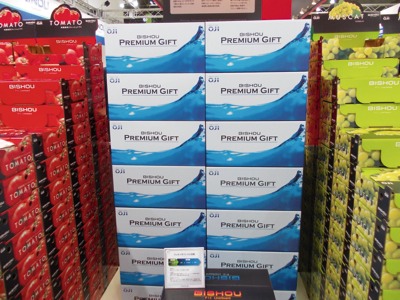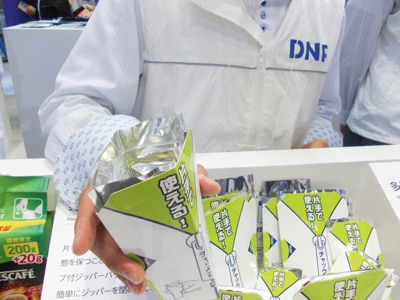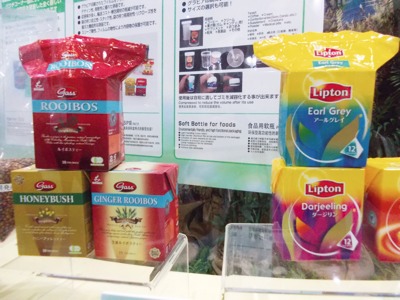With its unequivocal commitment to optimising materials resource combined with a natural ability for developing innovative solutions that often appear to be quite simple, the Japanese packaging industry effortlessly demonstrates that less really can mean more, reports Des King.
Although no longer the de facto power house driving the Asia-Pacific market economy and despite predictions that consumption will virtually plateau over the next five years, as a €55 billion market, Japan still accounts for one third of the region’s packaging consumption.
Notwithstanding the deep-seated recession within which it has been mired for the past decade, Japan’s population of 127.5 million, with an average per capita GDP of €26,750, still enjoys a relatively well-heeled lifestyle, albeit refreshingly frugal in its aversion towards unnecessary consumption. This is notably characterised by a collective willingness across the entire supply chain to recycle or reuse (including energy from waste) spent packaging, with producers making it as easy as possible for consumers to do so, by no means good housekeeping for its own sake, but a practical imperative in a country so highly dependent upon imports.
Restricting the usage of outsourced raw materials whilst stoking up demand for consumer goods is a complicated balancing act at the best of times, but with what is still the world’s third largest economy in recovery from the twin natural disasters of the tsunami and earthquake two years ago, it is not surprising that levels rose by almost 20% during 2012.
At a cost to the economy of over €230 billion, Japan saw a fifth of its domestic paper and board manufacture wiped out, 15% of its printing capacity eliminated, four complete ethylene crackers lost and all of its hot melt glue production destroyed. It is said that the food shortages rife in Tokyo at the time were not due to there being nothing to eat but because of the lack of packaging in which it could be transported and distributed.
Within such a precarious context practical remedial strategies are the norm. For example, there is an industry-wide agreement not to use coloured PET (hence a thriving shrink sleeve market), a preference for labels that are easier than the norm to peel off and a glut of refill packs, invariably two or three-layer co-extruded flexible pouches. These increasingly tend to optimise the natural properties of the material itself in applying functionality rather than drafting in additional aids.
Staying flexible
Whilst it may lag behind the likes of China, India and South Korea in terms of expansion, Japan still comfortably outperforms its neighbours in terms of quality and innovation, no more so than in the development of sustainable flexible packaging solutions, the one sector of the domestic industry on a significant growth trajectory.
Currently valued at around €12.3 billion, flexible applications are on course to expand market share to around 25% by 2016 with almost two thirds constructed in plastic film, in the main BOPP and PE. With over 80% of all flexible packaging used in the food sector, the dominant application is the flexo or gravure printed stand-up pouch (SUP) format that Japan is largely accredited for introducing onto the global market and in driving its ongoing development.
Typical of the sector’s innovative approach to SUPs is the country’s largest quad-seal pinch bottom pouch producer Takigawa’s new flat-bottomed ‘E.Z. Shake’ pouch that can either be used as a single use shaker or else with detachable tear-base that once removed leaves a series of perforations through which herbicide/pest control powder can be dispersed – or else alternatively, insects such as ants can crawl inside and then take small particles of poison back to their nest, which will be entirely destroyed within under 10 days.
Made of PET on the outside and PE on the inside, the bag is reverse printed and laminated, and there is a release slacker between the layers, so although the detachable PET bottom strip is part of a two-ply lamination it still easily peels off. The format is fully commercialised within Japan, with a first UK application due to be rolled out in the next few months. In addition to its economical use of material, key to the success of the flat-bottomed bag and its enduring appeal to the brand marketing community is its five panel merchandising capability in ensuring that however it might be displayed on shelf, its messaging will always be visible, whether in a vertical or horizontal position.
Also designed to capture consumer attention from an on shelf vantage point are the steadily increasing number of part SUP/part rigid container hybrid structures now extending from the Japanese domestic market into North American and European retail outlets, for example, Totani Giken’s ‘Box Pouch’, which as well as its on shelf stand out and storage benefits resolves reclosability issues associated with existing breakfast cereals packaging, and Hosokawa Yoko’s ‘SIP’ (sleeve in pouch) – three quarters paperboard box built up from the base to which is glued the top half of a pouch.
Amongst pouches from which it is now easier to pour or refill is Toppan’s new ‘Sosogi Jozu’ format, which by eliminating the customary corner welded seal in the top corner extends the width sufficiently to form a natural spout that retains its shape. MeiwaPax’s new microwavable self venting pouch for frozen fish is one of a number of applications to incorporate a top sealed slit or similar inbuilt facility aimed at better withstanding internal pressure to improve content flavour.
Still at the concept stage prior to commercialisation are a two-ply metallised board/PE single portion handheld reclosable pouch for snacking on the go from Dai Nippon and an LDPE/nylon two-ply pouch that once cut to form a spout provides a secure closure by applying finger-tip pressure at the tapered end. Developed by packaging inventor Tadashi Hagawari, it has been patent approved in the US, China and Europe, and has already attracted the interest of a leading detergent brand owner.

East west differences
Pouch size and format is to some extent as much pre-conditioned by the nature of the Japanese retail infrastructure as the national flair for optimising functionality within a limited amount of surface area. Whilst supermarkets play a major retail role, the preferred option amongst consumers is to shop on demand via a plethora of small convenience stores – there are over 42,000 nationwide – characterised by a low SKU count (on average, 2000 units per store) and limited shelf space within a merchandising area of between 30 and 250 square metres.
Whilst these practical constraints have also acted hitherto as brake on the adoption of retail ready packaging (RRP), the format is undergoing something of a reassessment with at least three leading board manufacturer suppliers: Crown-Package, Oji and Rengo targeting the sector with new applications aimed at improving upon quality whilst reducing price.
‘Regardless of flute specification, all of our board weights are now a uniform 140 gsm/m², which is a 30% decrease on the previous structure, and we’re also showing that lower-priced brown (Kraft) paper in combination with a coated liner works just as well as virgin board in achieving the same degree of extended shelf life,’ said Oji Paper packaging innovation centre general manager Yutaka Ito. ‘On top of that, the savings achieved are enabling us to produce top-quality mineral-free water-based flexo-printed images. This is no longer about boxes, but about revitalising a category.’
Far from being a solution aimed solely at the supermarket retail model, Oji has also geared its production to be equally adept in managing short runs more appropriate in meeting the requirements of the convenience store market, with some outlets handing anything up to eight separate deliveries each day.
AR catch up
Another trend in which the Japanese market is rapidly playing catch-up in the wake of its Western counterparts is the adoption of augmented reality (AR), seen as the ideal way of resolving the need to incorporate a high degree of product and corporate information within a constrained on-pack space, noted Dai Nippon Printing’s head of digital and information network systems Kiyo Fujimoto with reference to its first to market application for local confectionery brand, Milky.
‘Whilst it obviously adds considerable value, it doesn’t actually add cost on to the packaging itself, nor is it necessary to integrate some sort of special effect or enabling mechanism, which means that existing application formats don’t need any kind of revision
‘The entire pack acts as the conduit to take the consumer online, so the smart phone or tablet can be pointed anywhere on the outer surface rather than inconveniencing the shopper in searching out a particular spot at which the connection can be made. Designers welcome it as no restrictions are placed on their creativity. Everyone wins as a result of this total pack approach.
‘We sell the packaging at its normal price, but then on top of that we charge an additional fee for the software application that creates the link between the phone and the product. There is a separate fee for each generic pack format.’
In addition to providing a brand owner with a pack that has superior multi level capability to that of his direct competition, an interesting implication for the converter is the development of a completely new revenue stream through selling software capability at a margin without incurring production or material cost to realise it.







